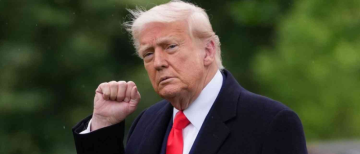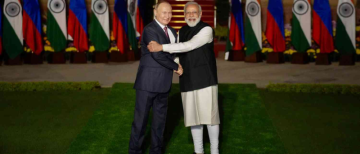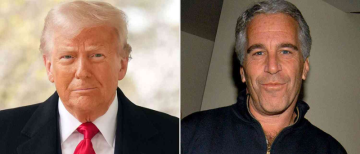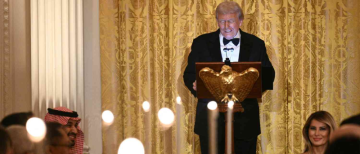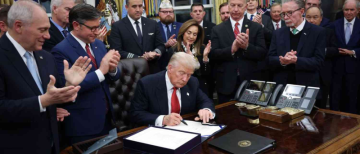United States President Donald Trump has wrapped up one of the most ambitious foreign visits of his tenure — a sweeping five-day tour across Asia that spanned Malaysia, Japan, and South Korea. Framed as a mission to reset trade relations, bolster defence alliances, and secure America’s strategic foothold in the Indo-Pacific, the trip also aimed to recalibrate Washington’s often tense dynamic with Beijing.
The tour, which culminated in a closely watched face-to-face meeting with Chinese President Xi Jinping in Busan, South Korea, yielded a handful of agreements that the White House hailed as major wins on trade, energy, and narcotics control. Yet, the broader reaction from Asian capitals and financial markets has been cautious — viewing Trump’s whirlwind diplomacy as an opening act rather than a decisive breakthrough.
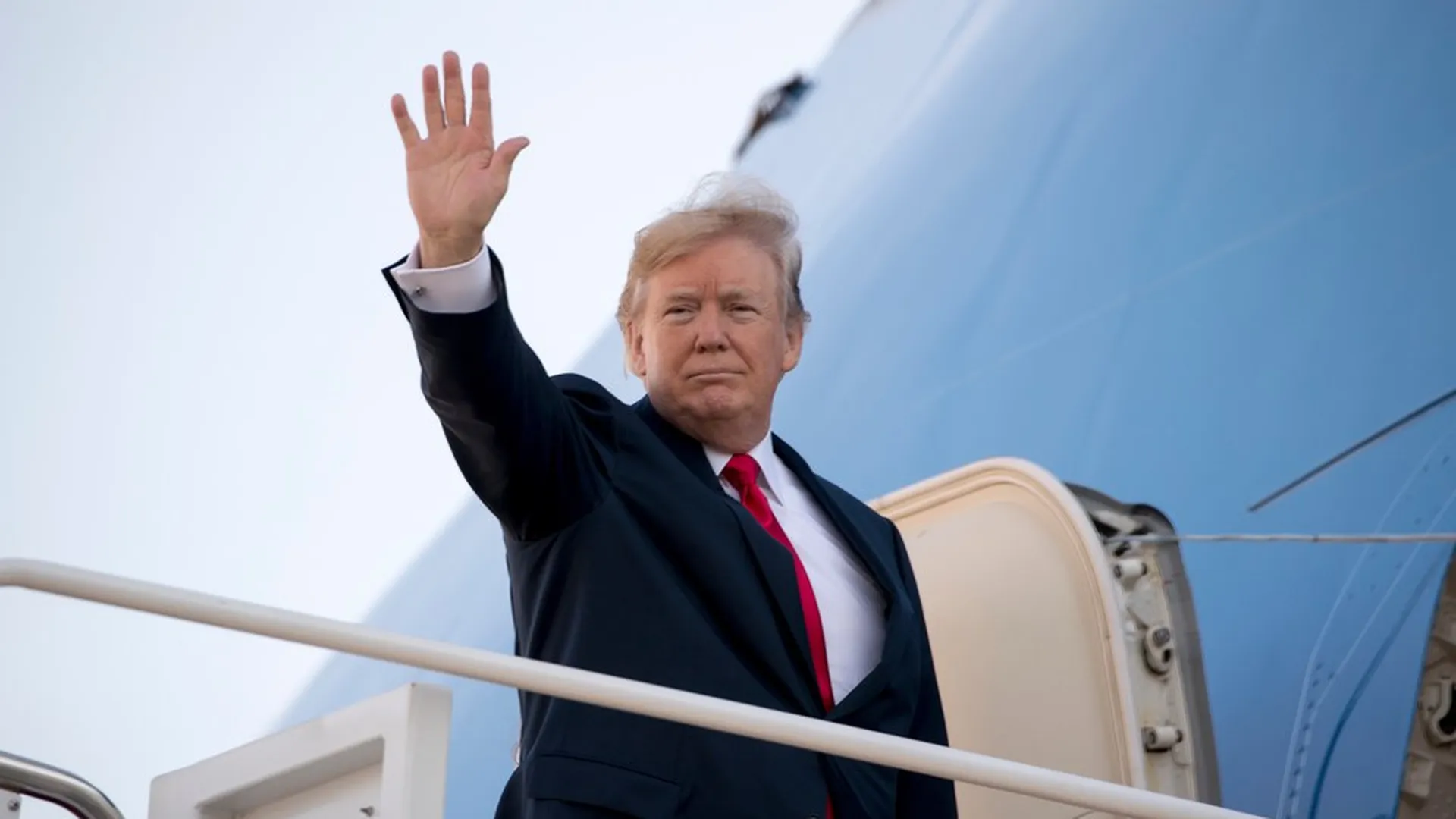
Setting the Stage: Trump’s Most Ambitious Diplomatic Push
Trump’s latest Asian visit marked his most significant diplomatic push in the region since returning to office. Each stop was carefully chosen — Japan for nuclear energy cooperation, South Korea for defence and trade realignment, Malaysia for expanded Southeast Asian outreach, and finally Busan for a symbolic handshake with China’s Xi Jinping.
The overarching goals were clear: secure new trade frameworks, deepen energy partnerships, fortify alliances, and ease some of the trade tensions that have long dominated the US–Asia economic narrative.
But while the White House touted the trip as a major success, reactions across Asia were mixed, reflecting the complex interplay of optimism, caution, and strategic hedging that continues to define US–Asia relations.
The Busan Breakthrough: Trump and Xi Jinping’s First Meeting Since 2019
At the heart of Trump’s Asia tour was his much-anticipated meeting with Chinese President Xi Jinping in Busan — their first in six years. The 90-minute dialogue, held on the sidelines of the Asia-Pacific Economic Cooperation (APEC) summit, served as both a symbolic and strategic reset in US–China ties.
-
A Tariff Truce and a Fentanyl Pact
Trump announced that he and Xi had reached an agreement to lower US tariffs on Chinese imports — reducing the overall rate from 57% to 47%, and halving the levy on fentanyl-related chemicals to 10%. In exchange, Beijing pledged to crack down on fentanyl production and trafficking, a major contributor to America’s opioid crisis, and to restart large-scale purchases of American soybeans.
“Xi will work very hard to stop the flow,” Trump said aboard Air Force One after the meeting, calling it “an amazing meeting” and rating it “12 out of 10.”
China also agreed to suspend its newly announced export restrictions on rare earth elements for one year. These materials, essential for manufacturing everything from smartphones and electric vehicles to advanced weapons systems, have long been a powerful bargaining chip in Beijing’s trade arsenal.
A statement from China’s commerce ministry later confirmed that both sides had reached “consensus on fentanyl cooperation and expanding agricultural trade.”
-
Market Reactions and Lingering Uncertainty
Despite the apparent progress, markets across Asia and Europe reacted cautiously. China’s Shanghai Composite Index slipped from its decade-high peak, and US soybean futures weakened as traders assessed whether the new pledges would translate into tangible results.
The Busan talks followed weeks of preliminary negotiations designed to avert a feared 100% tariff hike on Chinese goods and a potential Chinese ban on rare earth exports — both of which could have rattled global supply chains.
At the start of the meeting, Xi sought to strike a conciliatory tone. “Frictions between major powers are natural,” he said through a translator, adding that “China’s development and rejuvenation are not incompatible with President Trump’s goal of ‘Making America Great Again.’”
-
Behind the Scenes: What China Wanted
Beijing used the meeting to quietly press Washington on several fronts — urging the US to ease export restrictions on high-end technologies and reconsider newly imposed port fees on Chinese shipping, measures the US introduced to counter China’s dominance in global logistics.
While Trump offered no immediate concessions, he announced that China would immediately resume substantial US agricultural imports, confirming earlier reports that Beijing had already begun purchasing American soybeans again.
Interestingly, Trump clarified that Taiwan was not discussed during the meeting, nor was the matter of Nvidia’s Blackwell AI chip, which had sparked speculation about US technology export controls. “That was a matter for the company to resolve,” Trump said.
-
The Nuclear Testing Shockwave
Just hours before the Busan meeting, Trump made headlines by ordering the resumption of US nuclear weapons testing, ending a 33-year moratorium. The decision triggered concern in Beijing, with China’s foreign ministry expressing hope that Washington would “stick by the global test ban framework.”
Despite that tension, both leaders emphasized continuity. The White House confirmed that Trump plans a follow-up visit to China in April next year, with Xi expected to make a reciprocal trip to the United States afterward.
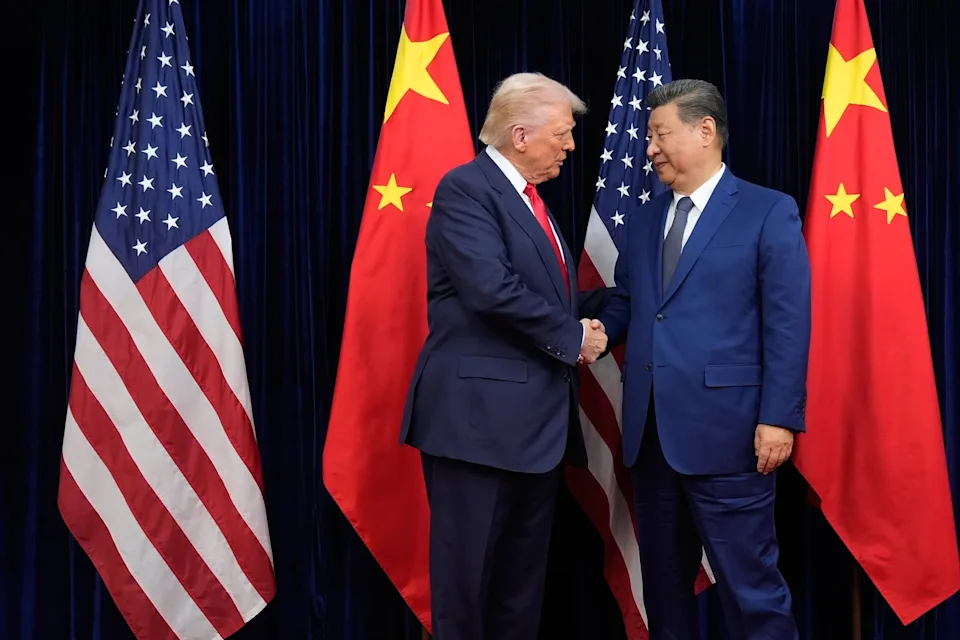
Gyeongju: Strengthening Ties with South Korea
From Busan, Trump’s next stop was Gyeongju, South Korea, where he met with President Lee Jae Myung to finalize a sweeping defence and trade package.
-
A Historic Defence Milestone
In a striking announcement, Trump revealed that Washington had approved Seoul’s long-standing request to construct a nuclear-powered submarine, making South Korea one of the few nations authorized to operate such vessels.
“The submarine will be built in a Philadelphia shipyard, where South Korean firms have increased investment,” Trump posted on social media.
The move underscores Washington’s intent to deepen military cooperation with one of its most important regional allies, particularly amid tensions with North Korea and concerns about China’s growing maritime assertiveness.
-
Expanding Energy and Trade Cooperation
Alongside the defence pact, Trump confirmed that South Korea had agreed to purchase vast quantities of US oil and gas, part of his administration’s broader push to expand American energy exports.
President Lee also requested US permission for the reprocessing of nuclear fuel, a sensitive matter still under review in Washington.
The updated trade framework, framed as a “realignment of economic and security cooperation,” fits into Trump’s strategy of coupling energy dominance with enhanced defence partnerships.
Tokyo: Reviving Japan’s Nuclear Ambitions
Tokyo marked the second stop on Trump’s Asian itinerary, where he met with Japan’s first female prime minister, Sanae Takaichi, at the Akasaka Palace.
The two leaders signed a landmark framework on nuclear energy and critical minerals, underscoring shared goals of reducing dependence on China and revitalizing Japan’s domestic nuclear sector.
-
Nuclear Energy Cooperation
The agreement commits both nations to collaborate on next-generation nuclear reactors — including the AP1000 and small modular reactors (SMRs) — with participation from leading companies such as Mitsubishi Heavy Industries, Toshiba Group, and several US-based advanced reactor firms.
For Japan, this marks a pivotal policy shift. Since the 2011 Fukushima Daiichi disaster, the country’s entire reactor fleet had been suspended. Prime Minister Takaichi, who has made nuclear revival a central part of her economic agenda, views the partnership as vital to Japan’s energy security and industrial competitiveness.
-
Building a Future in Critical Minerals and Fusion
Beyond nuclear energy, both sides agreed to strengthen cooperation on rare earth elements — essential for electronics, defence systems, and renewable technologies. A joint factsheet highlighted mutual goals: ensuring stable energy supply, lowering costs, and boosting export capabilities.
In addition, the White House identified fusion energy as a new frontier for collaboration. About 20 companies from both countries have already shown interest in investing in projects tied to the $550-billion joint initiative, which aims to diversify energy sources and stimulate innovation.
This partnership not only bolsters Japan’s industrial revival but also helps the US counter China’s dominance in the global clean energy supply chain.
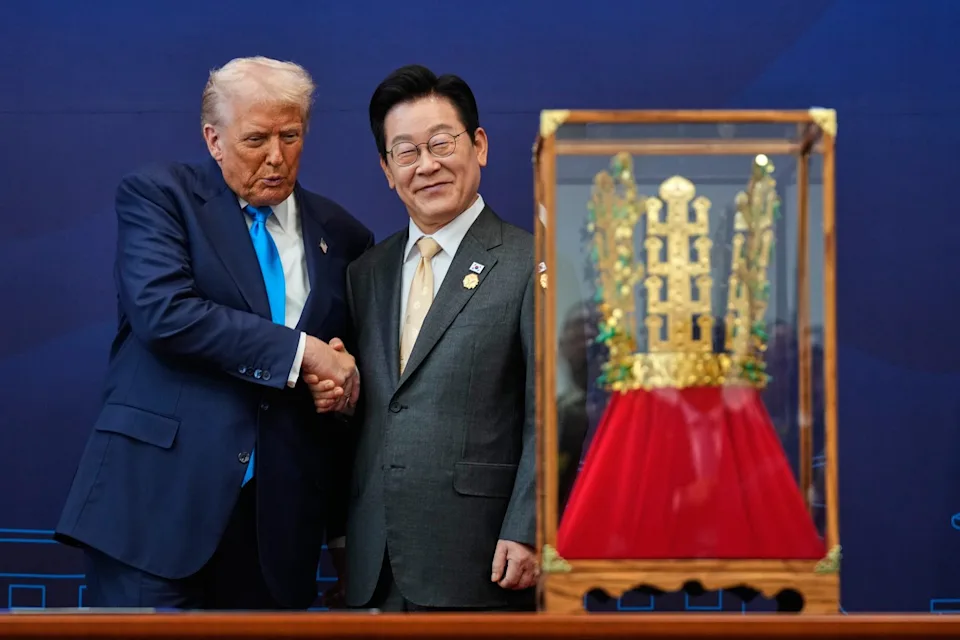
Kuala Lumpur: Courting Southeast Asia
Trump’s first stop — Malaysia — offered a different kind of challenge. As host of the 47th ASEAN Summit, Kuala Lumpur became the stage for Trump’s ambitious pitch to Southeast Asia — a region increasingly central to global manufacturing and trade realignment.
-
New Trade Agreements and Modest Gains
The White House heralded the visit as “historic,” announcing new trade deals with Malaysia and Cambodia and preliminary frameworks with Thailand and Vietnam. These agreements promised US exporters greater access to Southeast Asian markets while requiring local partners to buy billions in American goods.
However, the fine print revealed a more nuanced reality. Malaysia and Cambodia secured limited exemptions from steep US tariffs imposed during Trump’s first term, while Thailand and Vietnam saw tariffs remain in the 19–20% range.
In total, Southeast Asian nations committed to purchasing nearly $150 billion in US goods, including semiconductors, aerospace components, and data centre equipment.
Malaysia’s Trade Minister Zafrul Aziz welcomed the pact, noting that it “offers better access to US markets, exemptions for Malaysian palm oil, cocoa, and pharmaceuticals.” Prime Minister Anwar Ibrahim added that Washington seemed open to negotiating lower semiconductor tariffs — crucial for Malaysia’s booming export sector.
-
Persistent Tariff Ambiguities
Yet, a key concern lingers: how Washington plans to enforce its 40% tariff on “transshipped” goods — items rerouted through third countries to evade tariffs on Chinese exports.
“This issue hasn’t been resolved,” Zafrul admitted, saying Malaysia continued to seek clarity.
Cambodia’s Deputy Prime Minister Sun Chanthol called the deal “pleasing” but expressed hopes for further exemptions on garments and footwear, which make up half of Cambodia’s exports. Thailand’s Commerce Minister Suphajee Suthumpun described the signed framework as non-binding, with detailed talks expected to continue through year-end.
-
Regional Implications and Ceasefire Diplomacy
The ASEAN bloc, now collectively exporting more goods to the US than China, viewed Washington’s renewed engagement as strategically important — even if the economic benefits were unevenly distributed.
Trump also made diplomatic waves by presiding over a ceasefire agreement between Thailand and Cambodia, signed during the Kuala Lumpur summit.
On the sidelines, ASEAN leaders met with the US delegation to discuss tariff disparities — ranging from 10% for Singapore to 40% for Myanmar and Laos. Malaysia, Thailand, and Vietnam additionally committed to major US agricultural and energy purchases, while pledging policy support for digital trade and clean energy cooperation.
Kuala Lumpur further promised $70 billion in new capital investment in the US, and both sides signed memorandums on rare earths, nickel, and cobalt supply chains — minerals critical for the global shift toward electric vehicles and renewable energy.
The Verdict: Progress, But with Caveats
Trump’s five-day sprint across Asia underscored the complex balancing act at the heart of his foreign policy — a mix of deal-making bravado, strategic recalibration, and transactional diplomacy.
Each stop yielded headlines: tariff relief and drug cooperation in China, a nuclear submarine deal in South Korea, energy innovation with Japan, and trade openings in Southeast Asia. But many of these agreements remain frameworks rather than final deals, leaving room for future negotiation — and potential reversal.
While Trump has declared the tour an “incredible success,” the muted reaction from Asian markets and cautious optimism among regional leaders suggest that the true measure of success will depend on implementation, follow-through, and trust — elements not easily secured in an increasingly fragmented global order.
Still, for a president who thrives on spectacle and symbolism, the tour achieved what it set out to do: place Washington firmly back at the centre of the Asian conversation — and remind the world that, for better or worse, Trump’s diplomacy remains impossible to ignore.
With inputs from agencies
Image Source: Multiple agencies
© Copyright 2025. All Rights Reserved. Powered by Vygr Media.





